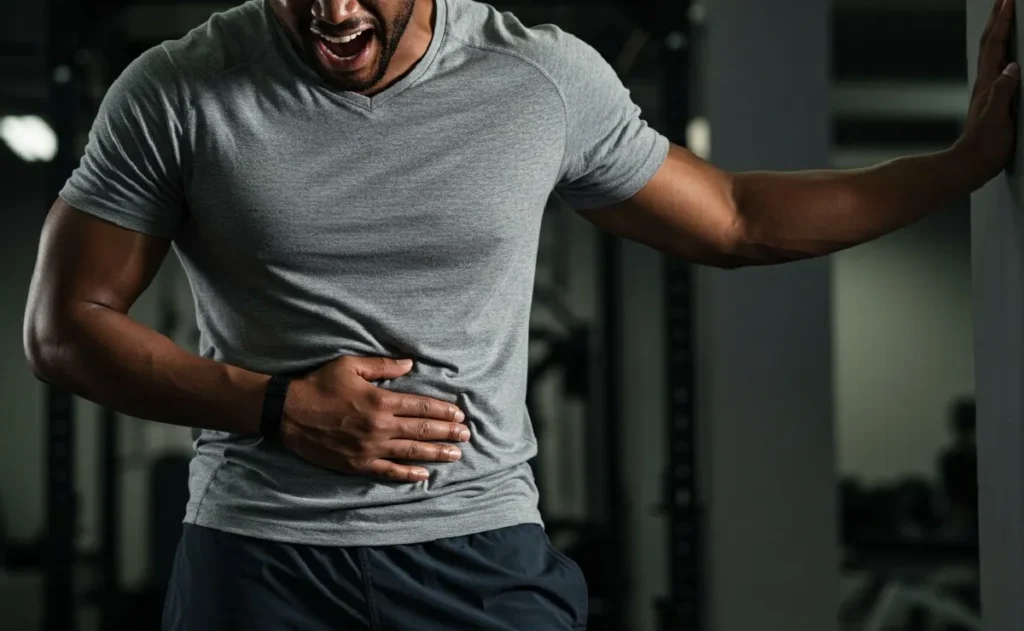Abdominal pain after exercise? Here’s what specialists say about its causes and when to worry. Feeling pain in the lower abdomen after exercising is more common than you might think.
According to specialists, this discomfort is usually associated with what is known as exercise-related transient abdominal pain (ETAP), a common phenomenon, especially among those who engage in activities such as running or high-intensity training.
Post-exercise abdominal pain can present as a stabbing or sharp sensation, but it isn’t necessarily a warning sign. However, in certain cases, it may indicate a medical condition that requires professional attention, especially if the discomfort persists for more than 72 hours or is accompanied by other symptoms.
Why does my stomach hurt after a workout?
There are several reasons why you might experience abdominal pain after exercise, and most are related to normal physiological reactions of the body. Among the main causes, experts highlight:
Reduction of blood flow
During exercise, the body prioritizes sending blood to active muscles, decreasing its circulation to other organs such as the digestive system. This redistribution can cause abdominal discomfort.
Diaphragm movement
The diaphragm, a key muscle in breathing, is especially active during physical activity. Its repeated movement can strain the ligaments connected to organs like the liver, triggering pain.
Abdominal distension after eating
Exercising on a full stomach can increase pressure within the abdomen, especially if the digestive organs are processing food or liquids. This puts strain on the diaphragm and can cause discomfort in the stomach area.
When does abdominal pain require medical attention?
Although exercise-related abdominal pain is usually temporary and harmless, some situations warrant medical attention. According to the U.S. National Library of Medicine, you should be alert if you the discomfort:
- It is constant or recurring over several days.
- It presents as persistent pelvic pain, located in the lower abdomen.
- It appears accompanied by other symptoms such as fever, nausea, or bleeding.
In women, post-exercise pelvic pain could also be linked to gynecological conditions, affecting organs such as the uterus, ovaries, or fallopian tubes. In men, prolonged discomfort could indicate prostate problems.
If you experience any warning signs or abdominal pain that does not improve after 24 to 72 hours, it is best to consult a specialist for a proper diagnosis.
How to Relieve Abdominal Pain After a Workout
In addition to abdominal pain, it’s common to experience muscle soreness after physical exertion. To relieve these sensations, specialists from the “Muscle Soreness Caused by Exercise” study recommend the following strategies:
- Perform gentle stretches after training.
- Massage the affected area with circular movements.
- Apply ice to reduce inflammation.
- Use warm compresses to promote blood flow.
- Consider over-the-counter pain relievers.
- Use gels or creams with menthol for a calming effect.
Maintaining good hydration, avoiding training on a full stomach, and warming up properly before exercise can also help prevent this type of abdominal discomfort.

